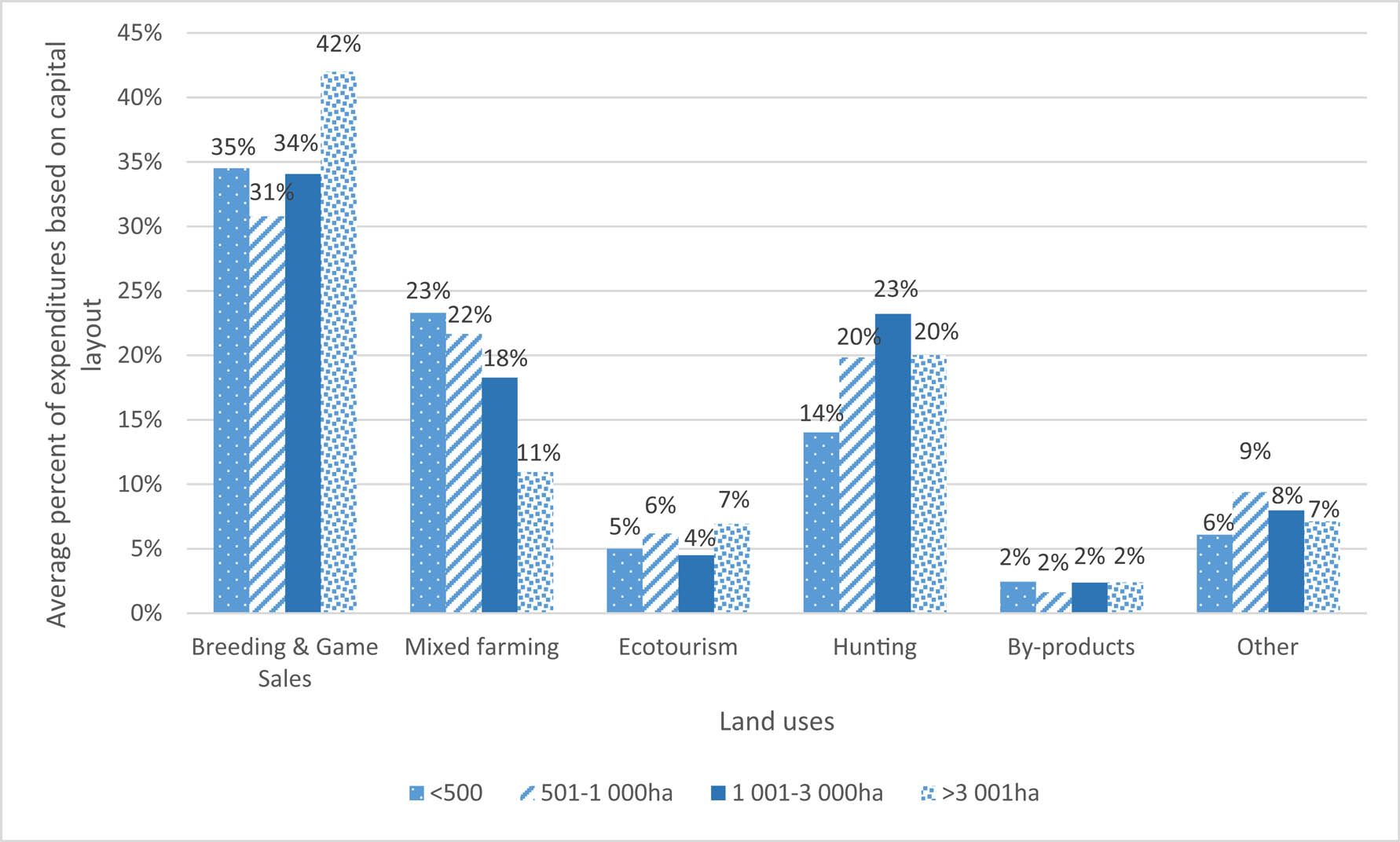Game Farming Cycle
“
— ”
Game farming in South Africa - popularly also known as wildlife ranching- refers to the practice of raising animals for the purposes of recreational hunting and meat consumption within fenced land parcels. There are about 7,000-10,000 farmers in South Africa whose income is from game farming.1 Local laws in South Africa established in the 20th century enabled private ownership of wildlife which led to the expansion and economic feasibility of game farms over their typical wildlife farming counterparts.2 Thousands of former cattle ranches are now profitable game farms. There are four main ways income is generated at game farms: cropping and sale of meat, trophy hunting, live animal sales to other game famers, and recreational game viewing.3
Game farming and commercial hunting has become a viable way to earn income from land ownership however an equally important legacy of their popularity has been its ability to help fund conservation movements to protect the populations of these animals: financial value has become attached to the life of an animal. Hunters paying for the opportunity to hunt these animals have raised enough money to ensure the survival of several species.4 The increasing demand for certain species has encouraged breeding of species that risked extinction. Additionally, recreational photography and trophy hunting within the natural habitats has incentivized more robust conservation of natural habitats. About 69 percent of all land in SA is privately owned and has the potential to further contribute to wildlife conservation efforts as hunting and recreational tourism continues to play an important role in the South African economy.5
For its merits, game farming, on the other hand, has been distorted by the preferences of international hunters for more exotically-colored trophies, leading to local game farm owners cross-breeding game. While this practice has the potential to conserve certain species, it risks adverse health and ecosystem consequences for local wild species if they were to intermingle with their escaped genetically cross-bred relatives.5 Similarly, local laws supporting game farming are hard to enforce as a result of much of the land used for this purpose is privately-owned, enabling owners to easily exploit and bypass these rules.

Image source:
Farm size and its impact on land use, Open Agriculture, 2020
References
1. Luxmoore, Richard. “Game Farming in South Africa as a Force in Conservation.” Oryx 19, no. 4 (October 1985): 225–31. https://doi.org/10.1017/S0030605300025667.
2. Ngubane, Mnqobi, and Shirley Brooks. “Land Beneficiaries as Game Farmers: Conservation, Land Reform and the Invention of the ‘Community Game Farm’ in KwaZulu-Natal.” Journal of Contemporary African Studies 31, no. 3 (July 1, 2013): 399–420. https://doi.org/10.1080/02589001.2013.811790.
3. Luxmoore, Richard. “Game Farming in South Africa as a Force in Conservation.” Oryx 19, no. 4 (October 1985): 225–31. https://doi.org/10.1017/S0030605300025667.
4. AfricaHunting.com. “History & Status Quo of Recreational Hunting in South Africa.” Accessed March 6, 2022. https://www.africahunting.com/threads/history-status-quo-of-recreational-hunting-in-south-africa.15017/.
5. Luxmoore, Richard. “Game Farming in South Africa as a Force in Conservation.” Oryx 19, no. 4 (October 1985): 225–31. https://doi.org/10.1017/S0030605300025667.
1. Luxmoore, Richard. “Game Farming in South Africa as a Force in Conservation.” Oryx 19, no. 4 (October 1985): 225–31. https://doi.org/10.1017/S0030605300025667.
2. Ngubane, Mnqobi, and Shirley Brooks. “Land Beneficiaries as Game Farmers: Conservation, Land Reform and the Invention of the ‘Community Game Farm’ in KwaZulu-Natal.” Journal of Contemporary African Studies 31, no. 3 (July 1, 2013): 399–420. https://doi.org/10.1080/02589001.2013.811790.
3. Luxmoore, Richard. “Game Farming in South Africa as a Force in Conservation.” Oryx 19, no. 4 (October 1985): 225–31. https://doi.org/10.1017/S0030605300025667.
4. AfricaHunting.com. “History & Status Quo of Recreational Hunting in South Africa.” Accessed March 6, 2022. https://www.africahunting.com/threads/history-status-quo-of-recreational-hunting-in-south-africa.15017/.
5. Luxmoore, Richard. “Game Farming in South Africa as a Force in Conservation.” Oryx 19, no. 4 (October 1985): 225–31. https://doi.org/10.1017/S0030605300025667.